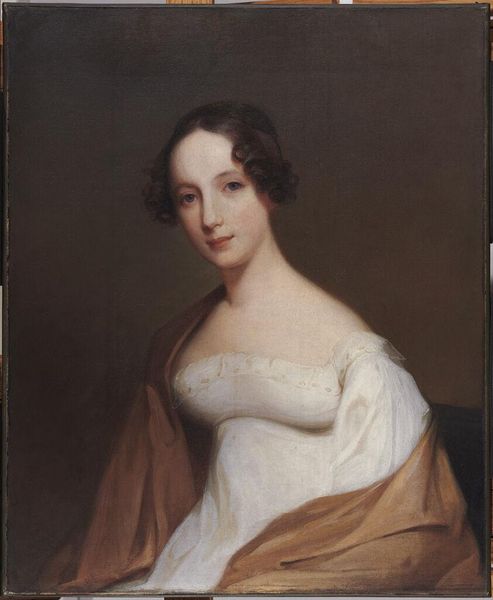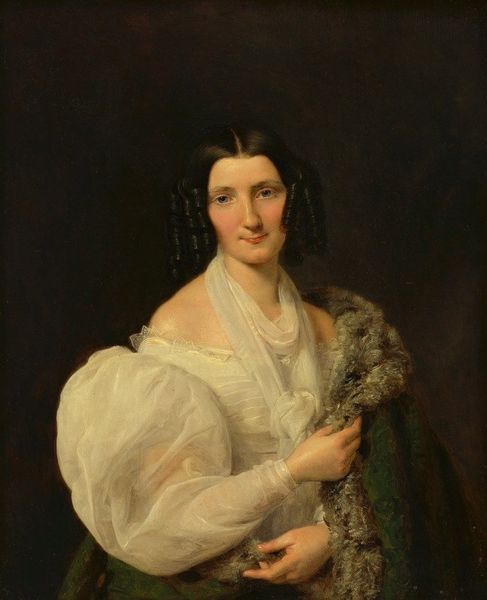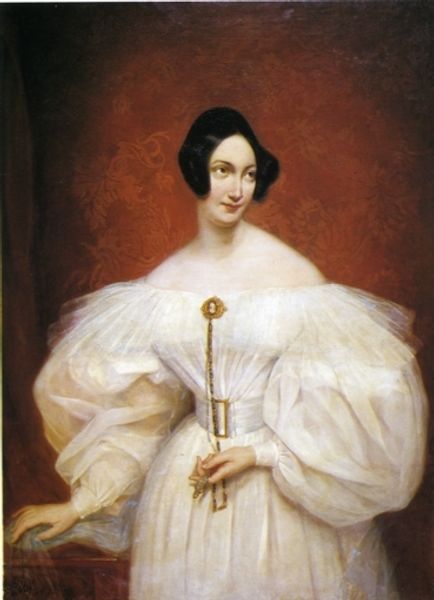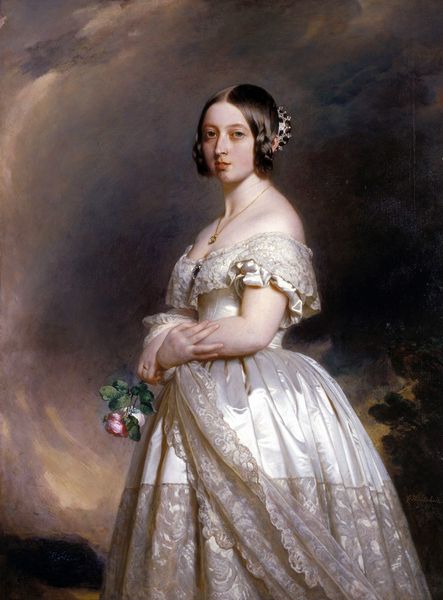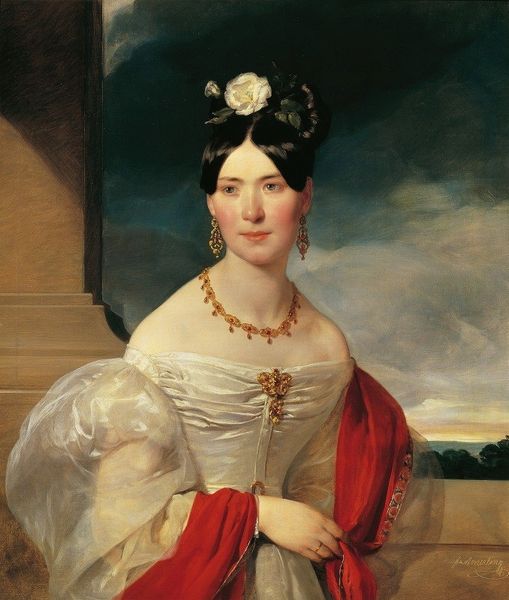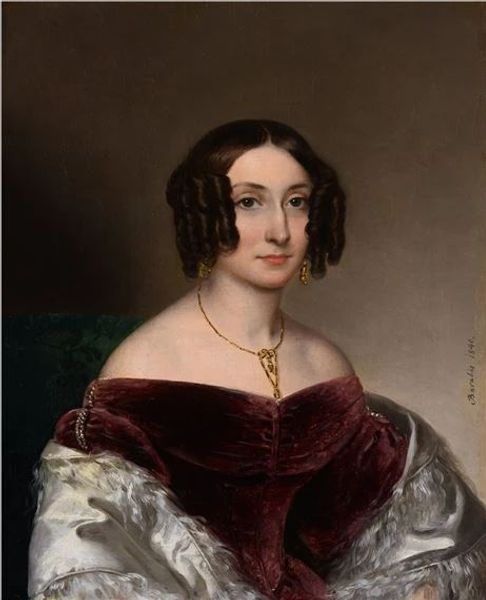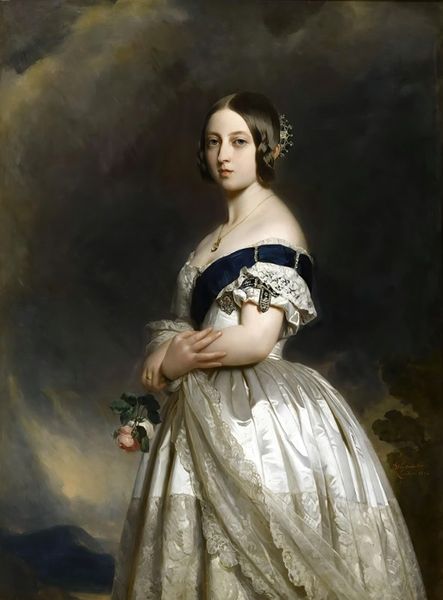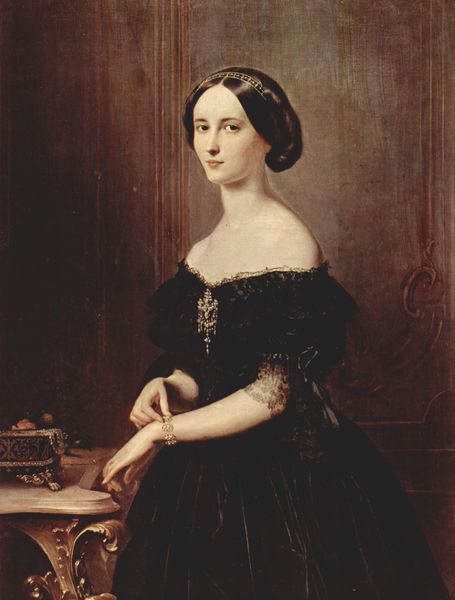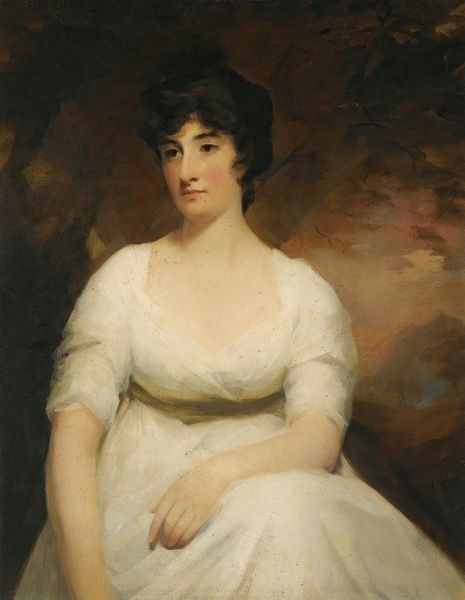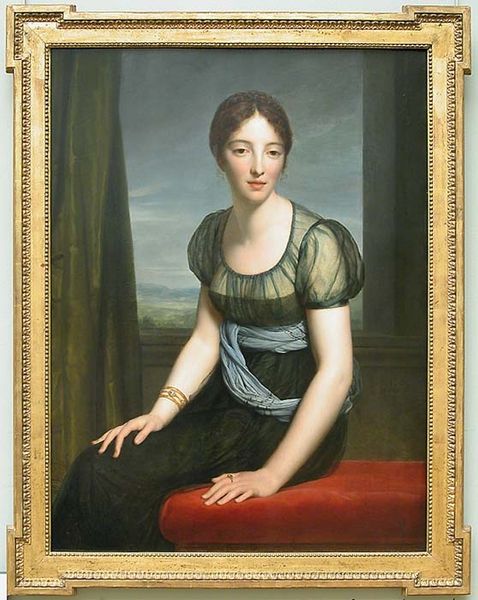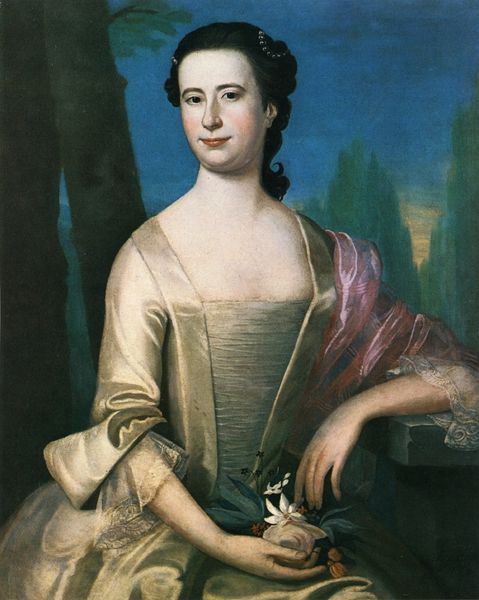
painting, oil-paint
#
portrait
#
figurative
#
painting
#
oil-paint
#
figuration
#
romanticism
#
history-painting
#
academic-art
#
portrait art
Copyright: Public Domain: Artvee
Théodore Chassériau painted this portrait of Comtesse de La Tour-Maubourg with oil on canvas. But let’s consider the Comtesse’s dress – its materiality. The fabric itself speaks to a particular moment in textile production, and its availability to those with means. Its very whiteness suggests that she has servants to keep it pristine. The lace detailing, probably machine-made by this point in the 19th century, attests to the mechanization of textile production. While seemingly delicate, lace had become another commodity, available to a growing middle class, and beyond. Chassériau has captured all of this with great precision, using his painterly skill to represent other forms of skill – those of the lacemakers and dressmakers who made such finery accessible. He gives us an image of elite consumption, but also a document of a society transformed by industrial manufacturing, and the changing economics of fashion. So, when we look at this painting, we are not just looking at a portrait, but at a picture of a whole social and material world.
Comments
No comments
Be the first to comment and join the conversation on the ultimate creative platform.
